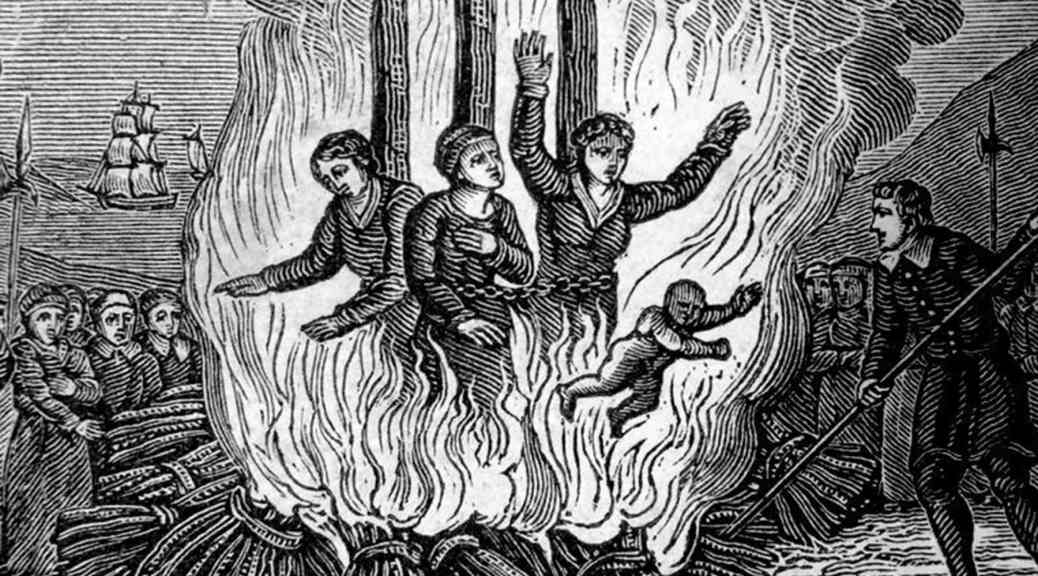As promised, I will now write the story of the Dutch witch Marigje Arriens. When I was writing about the logical fallacies, one fallacy was about the interpretation of Bathory´s song “Born for Burning”, which the author misinterpreted in the book that I criticized. When you read the lyrics of the song, you can clearly see it is about a witch who defies Christianity and that is why she is “born for burning”. When I looked up at the lyrics, in the end, it was written that the song is “dedicated to the witch Marigje Arriens, born 1521., burned 1591., in Schoonhoven, Holland”. Sources I used are from the Dutch websites (NOTA BENE! Be careful with the information found on the internet because they might not correspond with the truth. Same goes with other sources.) and “Malleus Maleficarum”, the standard handbook on witchcraft written by Catholic clergymen to see if there is any connection between the two.
The story of Marigje Arriens
She was born in
1521., in Poederoijen. She was a herbalist and one of the last people to be
burned at the stake because of alleged witchcraft. There is no information
about her childhood, but she was often consulted for her knowledge of medicinal
herbs. The reason why she was accused of witchcraft is not entirely clear.
According to one version, she was indicted by a dissatisfied patient. The
second version says that she was accused of witchcraft because she wanted to
charm or seduce a young, little boy. After being arrested, she admitted that
the devil had visited her twice and encouraged her into witchcraft. Allegedly,
she made this confession even though she was not tortured. Marigje was
sentenced to burn at the stake and was graciously strangled in front of the
town hall of Schoonhoven and then burned to ash.
Apparently she was very poor and has never been married in her life, although
she lived in Nieuwpoort for 6 months with a man called Michiel de Cuyper.
She had to wait two and a half months for her sentence. She was taken prisoner
on October 4th 1591. and the sentence was enforced on the 18th of December. She
was not the last witch to be burned, but she is the best known. A year before
her death, she lived in Utrecht, and before that, in Vianen and Nieuwpoort. It
is believed that she traveled a lot.
Malleus
Maleficarum and the connection with the case of Marrigje Ariens
The only connection I found between the two is if we are going to take the
second version of her story literally, in which she seduced the young boy and
because of that, she was accused of witchcraft. Malleus Maleficarum can only
help us with this case if we use it as a literal and truthful source of
information. I found no help from it since it is a guide and a fairy-tale
crossover. It is a guide which helps you find witches, succubuses, incubuses,
people who are possessed with demons and so on. It is especially superstitious
and illogical when it comes to the subject of why women tend to do witchcraft
more than men.
To sum up
Unfortunately, I could
not find more information on Marigje than this, and Malleus Maleficarum was not
helpful with the case (unless, of course, we take it all literally and
trustworthy). In this text, I presented the story of the infamous witch, but
when I get my hands on more trustworthy information, I shall make an addition
to this one.
I will end this text as a start to a future, additional one. Why were women
REALLY targeted and why were they accused of “WITCHCRAFT”?
My take on this is several possibilities:
1.) Their expertise in medicine, herbalism and so forth (just like Marigje was
an expert in herbalism)
2.) Women are those who pass on the tradition (stories, language, knowledge…) which the Church wanted to eliminate
3.) Deep hatred for Christianity
The Mage
